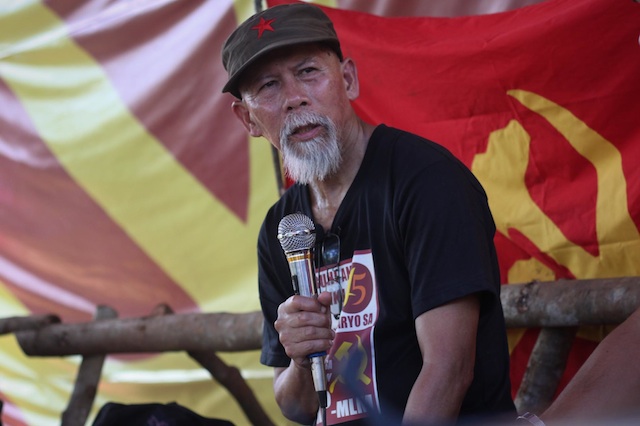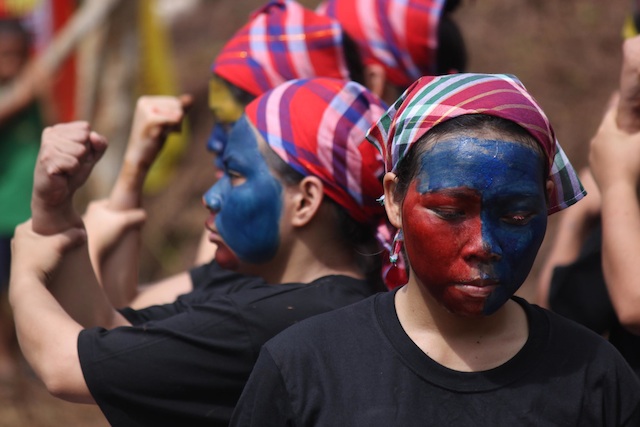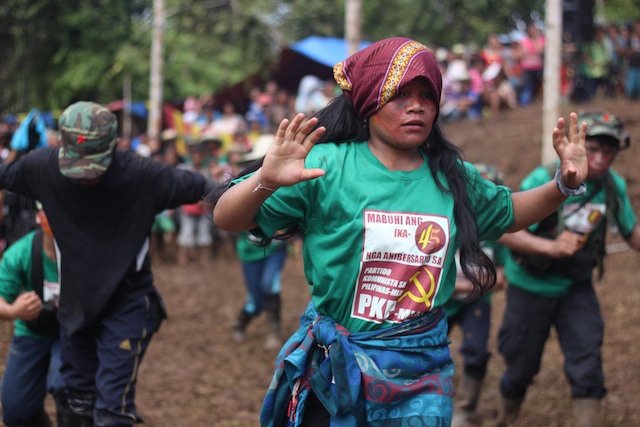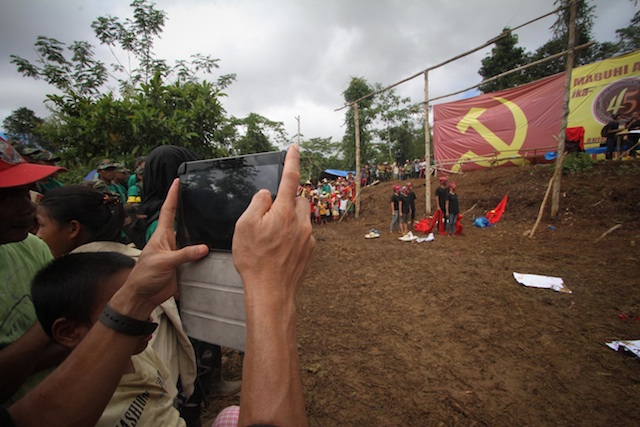
IN FIGHTING FORM.
George Madlos says the rebels are as strong as ever. Photo by Karlos Manlupig
AGUSAN DEL SUR, Philippines – On Thursday, December 26, hundreds of supporters travelled through rocky and muddy roads here to join New People's Army guerrillas in celebrating the 45th anniversary of the Communist Party of the Philippines (CPP).
Similar gatherings were also held in several areas in Mindanao. But this one was different. The spokesman of the National Democratic Front-Mindanao Jorge “Ka Oris” Madlos presided over the celebration.
"It is only right to celebrate the many victories of our revolutionary struggle of the past 45 years,” Madlos said. “Despite the AFP’s military and psy-war operations...the revolutionary bases have rapidly expanded and gained strength in more than 2000 barrios in more than 200 municipalities and 19 provinces in Mindanao. Hundreds of thousands of organized masses actively support the armed revolution,” he added.
Madlos said the crime rate is zero in these areas and the rebels' expansion is proof that government has failed to defeat Asia's longest-running insurgency.

45 YEARS. Members
of the Communist Party of the Philippines
The rebels have more than 46 guerilla fronts or 10 battalions in 5 regions in Mindanao, Madlos said.
“In the last 5 years, tactical offensives of the NPA have significantly intensified,” he added. From 250 tactical offensives in 2010, 350 in 2011 and 400 in 2012, Madlos said there are more than 400 offensives this year.
Madlos also claimed that at least a battalion of government troops suffers casualties per year since 2011. “While on the part of the NPA, the number of casualties did not go beyond a platoon each year of the same period,” he said.
Madlos boasted there are at least 10,000 members of the CPP in Mindanao alone.

It's an empty boast as far as the military is concerned. The guerrillas' numbers are dwindling, according to the military.
The CPP suffered its worst split in the 1990s, causing the creation of various factions within the communist movement. The government then declared that the communist decline was irreversible.
The rebels have managed to bounce back, however, reviving old bailiwicks such as those in eastern and northern Mindanao. This year, rebels attacked plantations, torched installations, harassed police detachments and abducted local security personnel.
"They have been fighting for 45 years and yet they have not gained ground against the government,” said 4th Infantry Division spokesman Capt Christian Uy. “The people believe that it is time to end the armed struggle... We believe our people would like to have a peaceful way of life and we believe we can only achieve this through peace talks," Uy added.
However, Madlos said President Benigno Aquino III has never shown interest or sincerity in resuming and completing the talks.

YES TO TECHNOLOGY.
CPP supporters during their 45th anniversary celebration. Photo by Karlos
Manlupig
The talks between both sides collapsed early this year. But they both declared a ceasefire for Christmas and New Year.

Well, it's that time of the year for exaggerated, over the top propaganda statements from the CPP with regard to its successful operations against the Philippine military and its overall increased strength and influence. The truth be told, the group is probably not any stronger or more effective than it has been over the past couple of decades. Insurgent strength probably hasn't changed all that much over the past 5-10 years or so.
ReplyDeleteThere is a certain ebb and flow to CPP/NPA activities/operations. They increase in some areas and decline in others. Much depends on the ability of the AFP to effectively implement its Bayanihan program in NPA influenced areas and deny NPA access to government controlled areas.
I can remember the heyday of CPP/NPA influence back in the late 1970s-early 1980s, before the demise of the martial law regime of Ferdinand Marcos. Large-scale NPA attacks against the AFP were a regular occurrence and NPA urban hit squads (Special Armed Partisan Units or SPARU) were responsible for the assassination of police, military, and local government officials almost on a daily basis. Those days a long gone.
The Philippine military still views the CPP/NPA a national security threat. That might be stretching it a bit. The truth is the CPP/NPA insurgents don't stand a snowball's chance in hell of defeating the Philippine military, toppling the central government in Manila, and seizing state power.
The NPA has been pushed into ever more remote areas of the country and its ability to mount large-scale operations against major units of the AFP is virtually non-existent. The Maoists can periodically carryout small scale ambushes against military patrols and overrun local police stations but in truth, it remains more of a local security issue rather than a national security threat.